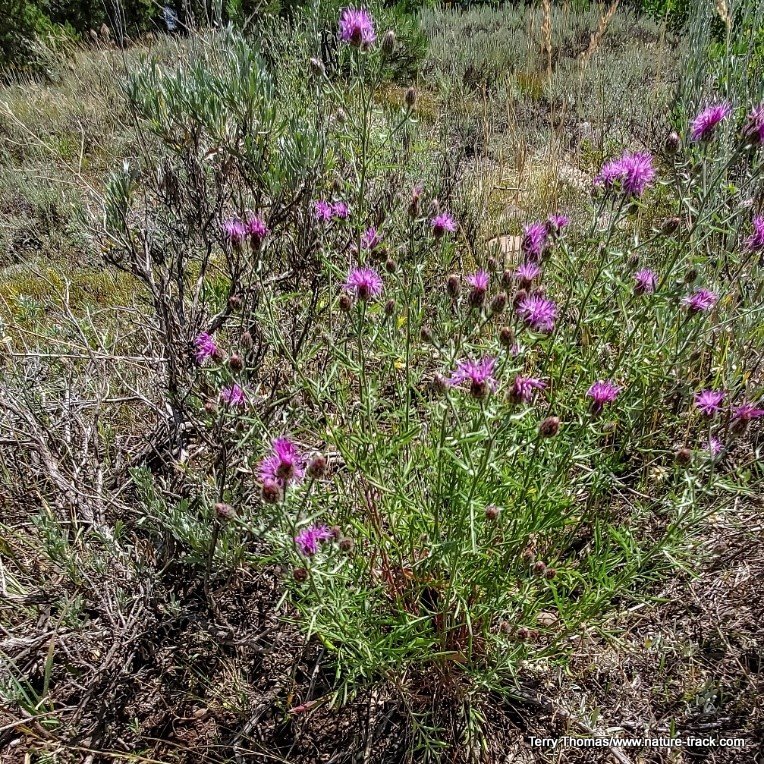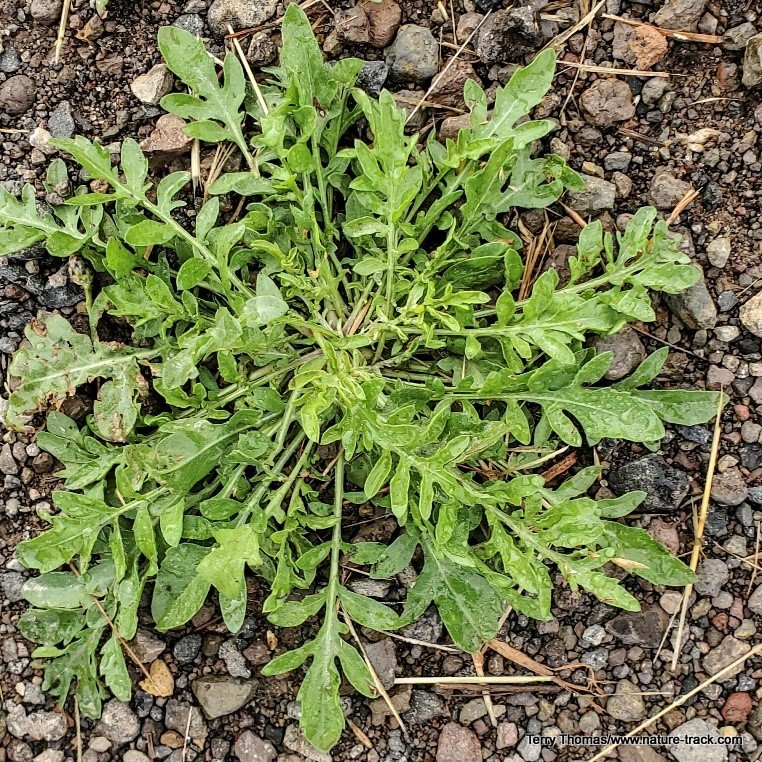A Word of Warning


There may be worse weeds out there, but this is the one that is threatening Island Park. Mature plant and first year rosette.
Years ago, when I was starting my career, my Conservation Officer patrol district included part of the Lochsa River on Highway 12. When I left four years later, I was pretty familiar with the river corridor and its habitats. It was 15 years before I returned as a seasoned habitat biologist who could now recognize noxious weeds at 55 mph. I could readily see that there was a significant change to the habitat. A new plant, spotted knapweed, an exotic from Eurasia, had invaded, covering every open slope and choking the riverbank. The change was dramatic and sadly, permanent.
According to a 2004 article in Smithsonian Magazine, “In Montana alone, it (knapweed) covers some 4.5 million acres and costs ranchers more than $40 million annually in herbicide and lost productivity… and renders huge tracts commercially useless, because cattle, horses and most other animals turn up their noses at it…(it) has become so rampant that elk have changed their migration routes to avoid it.”
I am writing this as a voice of warning because this very thing seems to be happening in Island Park. This same plant, spotted knapweed, has been increasing in the four years I have lived here and seems poised to really take off.
So, what is the real problem with a new wildflower? This non-native is aggressive and selfish. When it invades a habitat here outside its native range (where it has to deal with all sorts of predators and pathogens that keep it in check) it wants it all. It can quickly squelch native plants, turning the area into a monoculture of knapweed. It carries toxin in its leaves and stems that eliminate its native plant neighbors. The toxin is called 'catechin' (pronounced CAT-e-kin) and makes the soil unfit for other plants.
This plant is almost entirely useless to wildlife, so every acre of knapweed is one less for wildlife of all sorts. Also, stands of knapweed become very dense, often nearly impenetrable, making them impossible to walk through to access places like river banks. On private property, knapweed can turn your yard into a nightmare quickly.
I had to beat my friend, Penny Walbom, author of the weekly wildflower column, to the punch here. Despite having a purple flower that, begrudgingly, is pretty enough, this plant has no redeeming value and there is no situation where it should be given any slack.
This plant is a biennial, meaning that it forms a rosette in year one and then flowers the second year. Since it doesn’t have creeping roots like some of our weeds do, what we are really after is control of seed production—a single plant can produce 25,000 seeds. That is why RIGHT NOW is the time to control this weed. If it sets seed, it is too late for control this year unless you burn it.
The seed from this plant does not float around like a dandelion seed. It is sticky and must be transported to new areas via animals. That is where we come in. When we drive or walk through stands of knapweed, some of the seed inadvertently sticks to our tires and clothes, only to fall off at new locations. Do not drive or walk through stands of ripened knapweed and make your first priority to kill all knapweed along roadways, driveways and trails.
If you have knapweed on your property, state law requires that you eradicate it. Fortunately, it is relatively easy to kill or at least control if it doesn’t get out of hand first. You can cut down plants with a shovel, hand pull them (use gloves to handle them), mow them with a lawn mower or cut them with a weedeater. If you don’t remove the root-crown with a shovel, the plant will regrow and may require mowing or cutting again. The goal is to keep it from setting seed. If you do that, the plant will die unfulfilled and we will eventually win the battle.
If you are so inclined, many of the chemical weedkiller products are effective if applied correctly. You may need to up the dose a bit as these weeds can resist chemicals at times. Chemical applications are also useful in hard-to-reach areas such as around rocks. Using chemicals when the plant is young up to beginning to flower is the perfect time. You can also use chemicals to kill the rosettes that would produce next year’s crop and some chemicals like Milestone have a residual effect in the soil, suppressing seedlings for several years.
There is biocontrol (insects that attack the roots, stems and seedheads) now in place in some areas, but they are spendy. In addition, in a given area, it may take ten years for them to get established enough to make a difference. They should be part of our arsenal, but we need action now.
You might think that this is a government problem, but the government isn’t coming. The Forest Service has turned all their weed control responsibilities over to Fremont County (that was last year. This year the FS didn’t have the money to pay the county and hired a crew of two for their weed control effort from Montana to St Anthony) and the county is wrapped up in bigger projects. Fremont County Weed Control Department is willing to come and chemically treat your problem for a fee (a reasonable alternative in my mind), but you have to call and ask them to come and then hope they come before seeds ripen.
I have been trying to control knapweed wherever I see it in Island Park for four years. I am losing the battle. Please help by aggressively tackling your own property and any public property where you encounter it and sharing this information with neighbors and absentee owners that you know. If you see it around businesses, let them know that you would appreciate it if they would control it. It would not hurt to let the public agencies—Forest Service, BLM, State Lands, Highway Department and Fremont County all know that you are not happy to see more knapweed in Island Park.
Along Montana’s Rocky Mountain Front, a campaign called, Pull Your Share, asks hikers to spend 15 minutes of their hike time [huckleberry picking for example] pulling knapweed where they find it. If we take a similar approach, not just along trails, but everywhere, we can stop this invader on our shores, but we haven’t much time left to act before it is totally out of control.